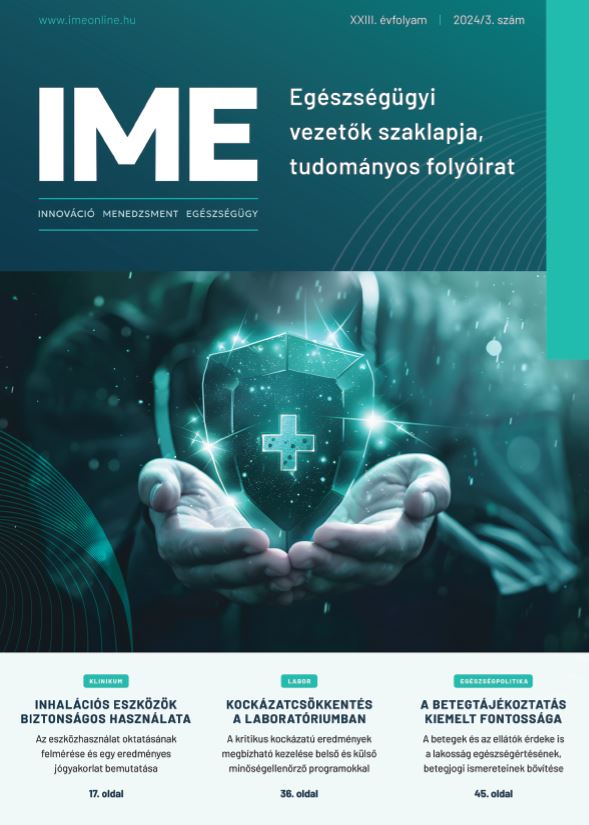The process of reducing patient risks in a laboratory network
Abstract
The effective functioning of healthcare providers requires continuous analysis, improvement and development of their activities. SYNLAB Hungary Ltd. set a goal to improve patient safety in 2013 and, in 2017 launched a working group to standardise the management of laboratory results indicating critical patient condition across the network. These laboratory results signify risk of major adverse patient outcomes. Clinical laboratories in collaboration with medical staff are responsible for establishing a critical values list and for ensuring timely communication to a licensed caregiver. Proper selection of test and their limits is important to improve patient care and to minimize distraction of the clinical team that occurs by calling unnecessarily. The mechanisms for their rapid identification and timely reporting are essential for patient safety. They need to be communicated without delay to a responsible caregiver for urgent patient evaluation and managemenet. This practice is essential for patient safety and is mandated by regulatory and accreditation requirements for laboratories and health care organizations. In the network, the patient safety risks were estimated and compared using Failure Mode and Effects Analysis. Many regulatory and accreditation organizations require processes for reporting results that need urgent clinical review as well as monitoring systems and quality goals to ensure reporting is timely and effective. Compliance with these regulatory and accreditation requirements is often a focal point during inspections of laboratories. Our objective was for laboratories to monitor the process of managing laboratory critical risk results using indicators. Performance targets were set to ensure the reliability of the reporting of critical risk results. For both indicators, it is proposed to set a target of 100% successful communication of results to the responsible care provider within the shortest possible time (no more than 1 hour after the confirmation). In the Dunaújváros laboratory, a total of 13198 alarm results were investigated in the period 2017-2021. 12574 of them were successful communication (95% reliability). As unnecessary repetition of alarm results delays the issuing of the results, it poses a risk to patient safety. The laboratory in Dunaújváros examined a total of 1844 repeat alarm results over a 30-month period, based on the international recommendation of the Clinical Laboratory Improvement Amendments for the amount of total allowable error limit. Of these, 929 were haematological and 915 chemical tests. Of the 1844 results, 1701 (92%) were within the margin of error. Based on the results of our study, it can be concluded that the results that need to be repeated are primarily those that do not correlate with the patient's past or present condition based on delta check (critical or significant difference). Delta checking should be provided either by the automaton or by the IT system. All these measures can be used to reduce patient risks associated with the management of critical results, and the FMEA table can be used to monitor residual risks for continuous improvement.

This work is licensed under a Creative Commons Attribution-NonCommercial-NoDerivatives 4.0 International License.




